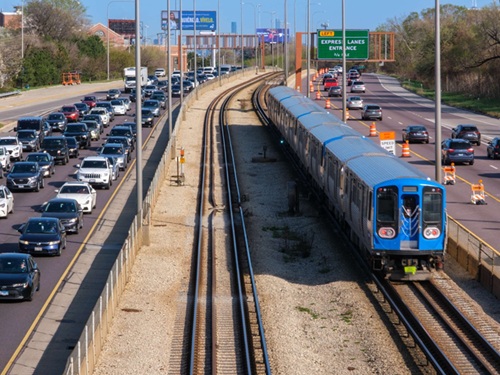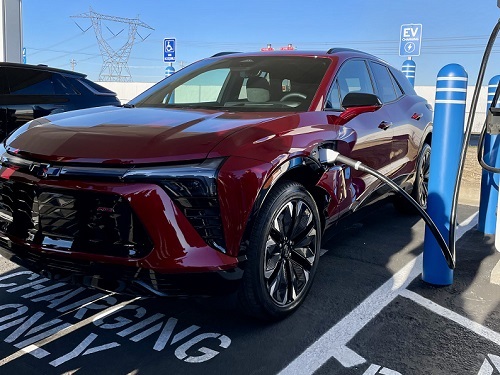The Federal Highway Administration recently issued $623 million from its Charging and Fueling Infrastructure or CFI grant program to fund 47 electric vehicle charging and alternative-fueling infrastructure projects in 22 states and Puerto Rico.
[Above photo by the FHWA]
The FHWA noted in a statement that its $2.5 billion CFI grant program complements the $5 billion National Electric Vehicle Infrastructure or NEVI formula program to build what the agency calls the “backbone” of high-speed EV chargers along U.S. highways.
As part of this CFI grant announcement, the FHWA awarded $311 million to 36 “community” projects, including two Indian tribes in Alaska and Arizona. These projects invest in EV charging and hydrogen fueling infrastructure in urban and rural communities, including at convenient and high-use locations like schools, parks, libraries, multi-family housing, and more.
Another $312 million in funding will go to 11 “corridor” recipients whose projects are located along roadways designated as Alternative Fuel Corridors.
To provide a consistent and reliable repowering experience, the agency said EV chargers constructed with CFI funds must adhere to the same minimum standards the FHWA established for NEVI-funded chargers – including requirements that CFI-funded chargers are “Made in America” as well as installed and maintained in accordance with strong workforce standards.
[Editor’s note: The American Association of State Highway and Transportation Officials recently called on the FHWA to defer the cost component of the new “Build America/Buy America” by a full year – to July 1, 2025 – to provide more time for domestic makers of EV recharging systems to get up to speed.]
FHWA noted that it continues working closely with the Joint Office of Energy and Transportation as part of its efforts to support build-out of EV infrastructure across the country – providing technical assistance on planning and implementation of a national network of electric vehicle chargers and zero-emission fueling infrastructure.
 Nation
Nation


